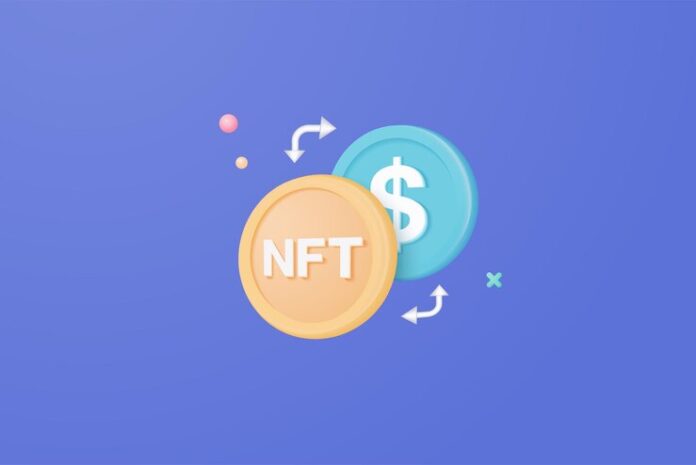There are two basic categories of virtual assets: non-fungible tokens (NFTs) and cryptocurrencies. Each has particular advantages and disadvantages. A comparison analysis using several criteria is necessary to have a deeper understanding of these two asset classes. This article compares NFT and cryptocurrency, the two most common types of digital assets, side by side. One of The main distinctions between the two is that cryptocurrencies are digital assets that can be copied, whereas NFTs are unique digital assets that cannot. Each variety offers benefits and drawbacks.
Which is, therefore, superior? NFTs or cryptocurrency? The response varies depending on the search criteria. Cryptocurrency or White Label Crypto Cards is a great option for anyone who wants to trade or invest and is searching for something special that cannot be duplicated. To gain a deeper comprehension of cryptocurrencies in comparison to NFT, check out the top Blockchain course.
NFT vs. Cryptocurrency: A Comparison of the Two
NFT and crypto are very different from one another. A few of them are highlighted below:
THE DEFINITION:
What is Cryptocurrency?
Cryptocurrencies are virtual or digital currencies that guard against fraud and duplicate spending by encrypting transactions. Blockchain technology is the backbone of many decentralized networks powered by cryptocurrencies. It is a distributed ledger maintained by a distributed network of computers.
Since cryptocurrencies are typically not regulated by a single entity, manipulation or involvement by the government may not affect them.
NFTs: What are they?
It is not possible to exchange NFTs. As a result, they cannot be traded for one another, in contrast to traditional cryptocurrencies like Bitcoin. Every NFT is unique, which explains why their values vary. Digital assets such as music, art, and other virtual items are commonly represented using NFTs. They have been gaining popularity since they are easy to buy, sell, and exchange on decentralized marketplaces.
TRANSFER AND TRADE:
NFTs are unique and non-fungible digital assets, meaning each NFT is distinct and cannot be substituted by another NFT. This is one way that NFT trading differs from cryptocurrency trading. Conversely, cryptocurrencies are digital assets that may be exchanged for other cryptocurrencies of the same value, making them fungible. Trading cryptocurrencies involves trading the asset’s underlying value, whereas trading NFTs involves trading the asset itself. The leading NFT marketplaces with US headquarters are OpenSea, Rarible, and Jupiter Meta.
OBJECTIVE:
A non-fungible token (NFT) is primarily used to prove ownership of digital assets. NFTs can be used to represent digital content in the form of images, audio files, videos, and other formats. Additionally, tangible items like artwork, collectibles, and even real estate can be represented by NFTs.
NFTs are perfect for proving ownership and authenticity because they are one-of-a-kind and cannot be duplicated. The blockchain, a distributed database that is safe and impenetrable, is where NFTs are stored. In response to questions concerning NFTs versus blockchain, it can be clarified that NFTs are tokens based on the blockchain symbolizing distinctive assets such as media, digital property, or works of art.
Cryptocurrencies are an exchange designed to interchange digital information and circumvent problems with fiat currencies, much like traditional currencies like the US dollar. It enables quick, secure, decentralized transactions in addition to buying and paying for goods and services.
UNPREDICTABILITY:
In contrast to NFTs, cryptocurrencies are frequently praised for their volatility. While some view this volatility favorably, others view it as a significant drawback. Conversely, they are typically far more stable because the same market dynamics do not influence NFTs as cryptocurrencies. Rather, NFTs are valued according to their own merits, which means that the market’s overall volatility has less of an impact on their values.
APPLICATIONS AND MARKETS:
The fact that cryptocurrencies are mostly used for investment or payment, whereas NFTs can be used for a variety of uses, such as digital art, gaming, and collectibles, is one of the key distinctions between NFTs and cryptocurrencies. While cryptocurrencies can be bought and sold on several exchanges, NFTs are typically on specialized markets. The top cryptocurrency exchanges in the United States are Kraken, Gemini, and Crypto.com, to mention a few.
What Makes NFTs Different from Cryptocurrencies?
NFTs are distinct from other types of currency because they cannot be broken into smaller pieces like cryptocurrencies. Because of this, NFTs resemble tangible assets more—like works of art or real estate—which are only split into entire parts. When contrasting blockchain with NFTs, the primary distinction between the two is that NFTs can keep their data on the blockchain, enhancing security and transparency. On the other hand, cryptocurrencies can be held on numerous platforms and are divisible. When it comes to portability, cryptocurrencies outperform NFTs. Cryptocurrencies and NFT vary in another way: although NFT cannot be used to buy goods and services, cryptocurrencies can.
Lastly, whereas the quantity of NFTs is limited, that of cryptocurrencies is not.
Knowing if a cryptocurrency is fungible or non-fungible is important when contrasting NFTs with it.
Cryptocurrency is a form of payment. It has merely economic value and is fungible like all other currencies. No matter which cryptocurrency token a person holds, they all have the same value—1 $ETH equals 1 $ETH. Because they are non-fungible, NFTs have worth that goes much beyond money.





